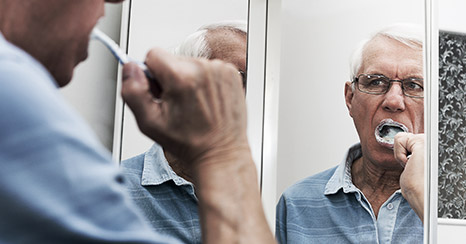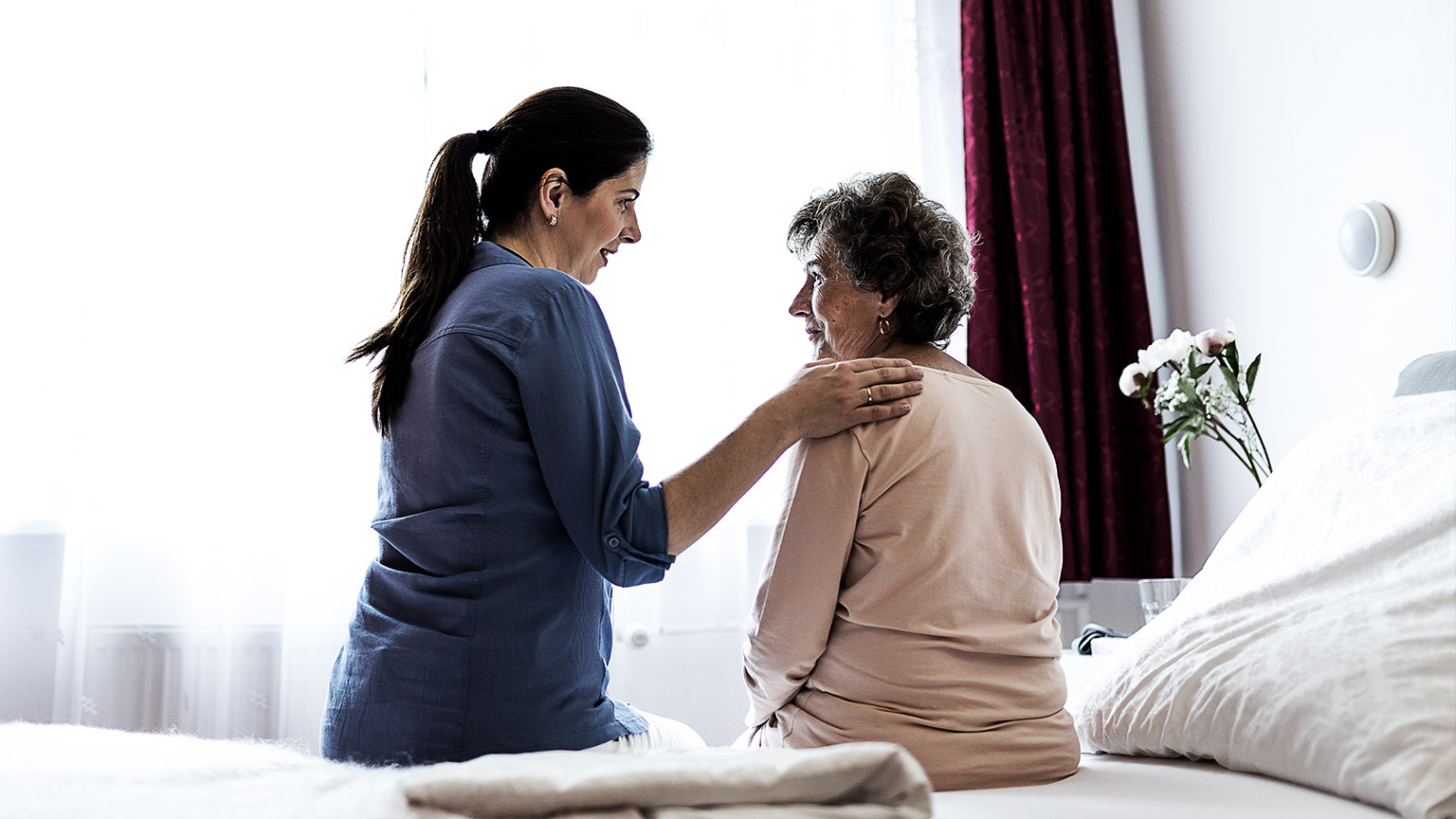As a support worker in the aged care and disability sector part of your role will be to provide your clients with person care such as supervising or helping within bathing, showering, personal hygiene and dress.
Under Standard 3. Personal care and clinical care of the Aged Care Quality Standards, an organisation or service must deliver safe and effective personal care, clinical care or both according to the consumer’s needs, goals and preferences.
The following information provides different types of personal care that you will
Bed Bath Routine
If a person is unable or unwilling to have a shower, a bed bath can be performed instead.
The following is an example of a procedure to follow:
- Adjust the bed to the waist level of the tallest support worker
- Prepare a basin filled with warm water
- Use towels or a waterproof sheet to protect the bed
- Work in sections, in the same order as showering, keep the rest of the person covered
- Roll the person to wash and dry their back and buttocks and to change their bedsheets
Watch
Watch the following YouTube video by Teepa Snow titled “Bathing and Dementia” about bathing a person with dementia.
When dressing and undressing
Have all the person’s clothing and other necessities prepared in advance. It is important when you are supporting a person with their grooming, dressing and undressing to keep the person as comfortable as possible. Always be respectful and polite and be care not to pull or push them. Try to speak to the person while you are dressing/undressing them to always check in and make sure they’re comfortable. Dress and undress the upper body first, then focus on the lower body.
Watch
Watch the following video from the CareChannel about helping with getting dressed and undressed.
Meal times are important as they are crucial to the older person’s continued good health. You should ensure that you are aware of what is in their care plan to guarantee that the older person you are caring for can have a pleasurable feeding experience.
The following are some tips to use during meal routines:
Make sure you have the person’s attention
- Make the environment a pleasant one
- Help the person to see and smell the food
- Let them know their meal choices o Offer the food and drinks the person’s prefers
Have the person sit upright
- Never try to help a person to eat or drink while they are slumped, lying down or reclined
Offer small mouthful at a time
- Wait for the person to chew and swallow
- Provide a sip of fluid between each mouthful if this helps the person to swallow
Report any difficulties
- Let a supervisor know if the person has difficulty swallowing, chewing of if they refuse their meal
Watch
The following video shows how to help with eating and drinking as a support worker or caregiver.

Oral care should be performed at least twice a day, in the morning and evening. Wash your hands and wear gloves when performing oral care. Remember that the person should be encouraged to care for their teeth, in whatever way they can do themselves. Additionally, when a person has dementia or has difficulty swallowing, food can sit in pockets in the mouth. The person might not be able to communicate mouth pain to you.
Natural teeth and gums
- Everyone should brush their teeth at the beginning and end of every day, and after meals if possible. If you assist with oral care, be sure to wear gloves.
- Cover clothing and linens with a towel.
- Use a wet toothbrush and toothpaste.
- Use a gentle horizontal back-and-forth motion for brushing the inside and outside of the teeth.
- When brushing the inside of the front teeth, hold the brush at an angle and use a side-to side motion.
- Be careful not to cause choking or gagging by putting the brush too far into the mouth.
- Allow resident to rinse with a glass of water and spit it out, then wipe his or her mouth.
Denture removal, cleaning and insertion
- Handle with gauze so you have a good grip on the dentures.
- Use only cold water to wash and soak dentures. Hot water can warp them.
- Use denture cleaner to brush the dentures. Only store in the resident’s personal holder.
Watch
The following video demonstrates how to remove and clean dentures.
There may be times where you are required to shave a persons face for them. For some men having a clean shaven face provides a sense of dignity and masculinity. It is important that you are very careful when shaving a person to avoid cutting the person and take extra care around the Adams apple. Here are some great tips for shaving a person.
Steps:
- Before beginning, put a towel under his chin to catch stray drops of water. Wash the face with warm water to soften the hair. Alternatively, you can use a wet cloth to wash the stubble.
- Apply shaving cream. Creams are easier to apply since they don’t require too much lathering like a shave soap.
- Use a safety razor. It gives a clean and close shave without the heightened risk of being cut by a straight razor.
- Shave along the direction of the hair growth. If you shave against the hair, it can cause ingrown hairs and irritate the skin. Use short and slow strokes.
- Use the safety razor’s weight to shave the hair off. The skin of elderly people is thin and very sensitive so use gentle strokes. Always ask the person how it feels. And adjust accordingly.
- Be careful around the Adam’s apple, mouth, nose, and chin. Bear in mind that people lose weight when they reach old age, therefore their face may have more angles than usual.
- Rinse the blade after every few strokes.
- Use a warm, moist face cloth to remove leftover lather. Dry the skin with a clean cloth.
- An aftershave is optional as the astringent’s sting may be too much for their skin. But if he’s accustomed to having some aftershave splash.
As previously discussed you must understand the persons preferences before you begin.
Watch
Watch the following YouTube video by CareChannel titled “Helping Someone Shave” for further guidance to support a person to shave.
When it is time for showering, provide as much privacy as possible and use a shower chair if your client is not able to support their own weight. Always encourage the person to do as much as they possible can on their own and at their own pace. Respect the clients need for privacy and dignity.
- Set the supplies within reach. Ensure to have shampoo, soap, wash cloths, towels prepared and ready. You may also have mobility aids such as a shower seat.
- Prepare the shower. Run the water and check for temperature.
- Guide the person into the shower while they hold the grab bar for support
- Allow them to wash on their own (unless they can’t). Give the person as much privacy as you can. Step in and help them wash if needed
- When considering privacy, stay on the outside of the shower curtain or screen, but continue to talk to the person to stay aware of their responses and safety.
- Rinse off, then help them exit the shower safely, onto a dry surface.
Watch
The following YouTube video titled “How to assist someone with a shower” by the Care Channel
You may also like to watch this video of how to assist with a bed bath. How to give a bed bath in a home – Care Channel
It is a good idea to help older people to develop a schedule to go to the toilet, such as every two hours. This can help keep their bladder healthy and their muscles strong. It can also help to reduce the risk of falls from needing to go in a hurry. If the person is having trouble urinating, try a drink of water or running the tap in the bathroom for them. Music or other distractions can help a person with dementia to sit on the toilet more patiently.
The use of continence aids
If a person cannot control their bladder or bowel, continence products can help maintain dignity and hygiene. Continence products can include:
- Pads
- Pants
- Uridome catheter
- Bed pads and chair pads
- Catheters
When helping a person to use a continence product, make sure:
- The person feels comfortable
- The aid has a snug fit to prevent leaking
- You change the aid when it becomes wet or soiled
- It protects the person’s privacy and dignity
Let your supervisor know if you feel the type of incontinence aid is no longer effective for the person, such as if they need a more absorbent style, or a style that cannot be removed as easily by a person with dementia.
Resource You can download a free copy of Continence Resources for Aged Care from the Continence Foundation of Australia here.
Watch
Watch the following YouTube video titled “How to choose the right continence product” by the Continence Foundation of Australia.
Read
Read the following article published by Better Health on Personal Hygiene:
Personal hygiene - Better Health Channel
Hand Hygiene Australia has published a manual for the National hand hygiene initiative in healthcare:
